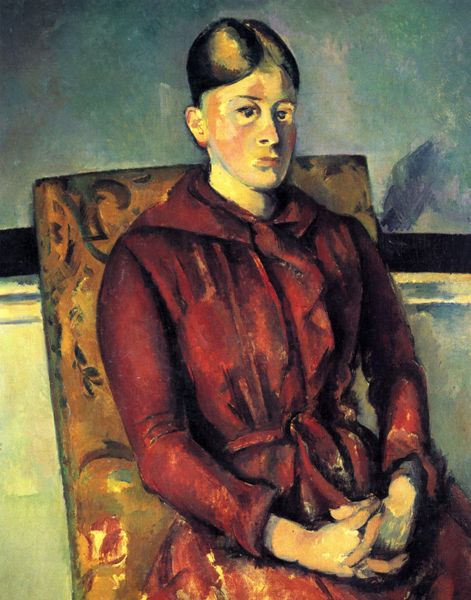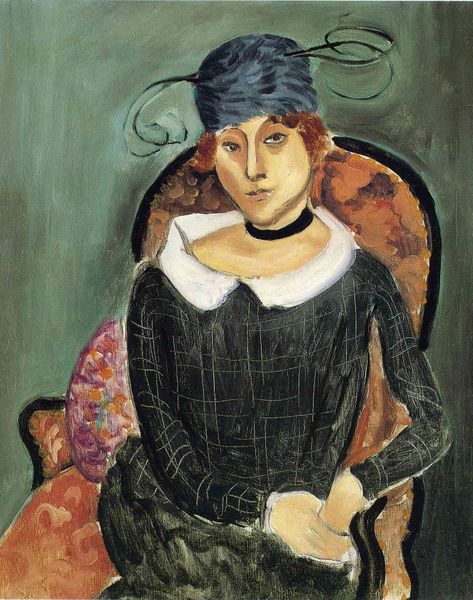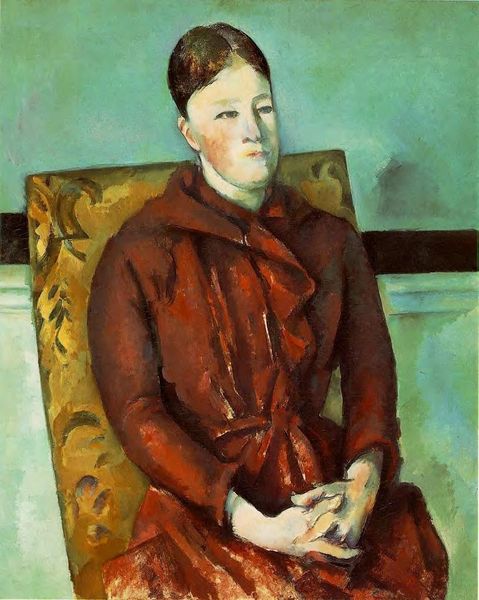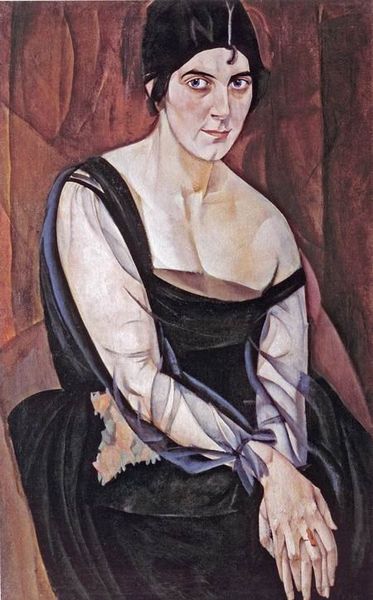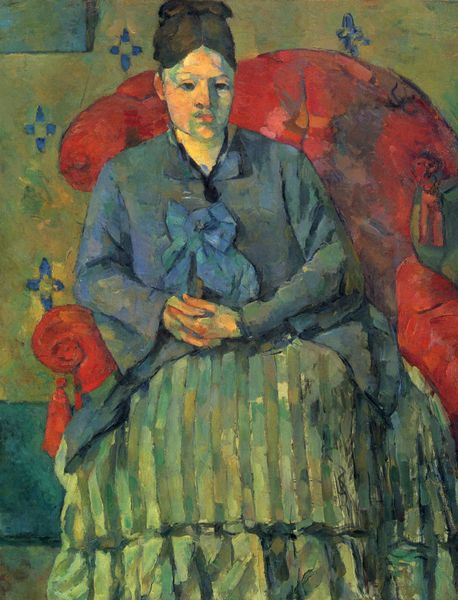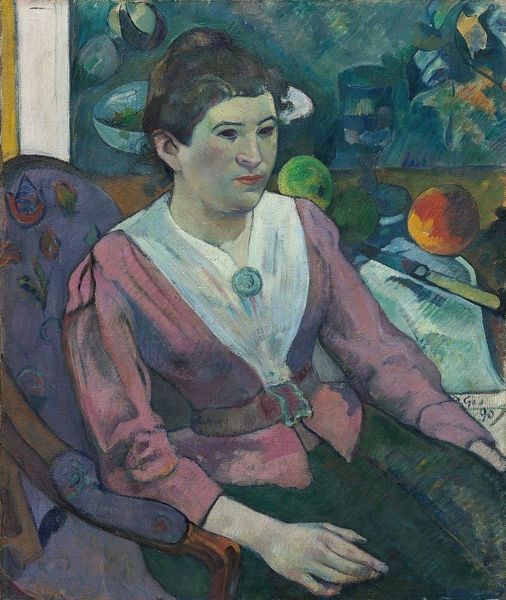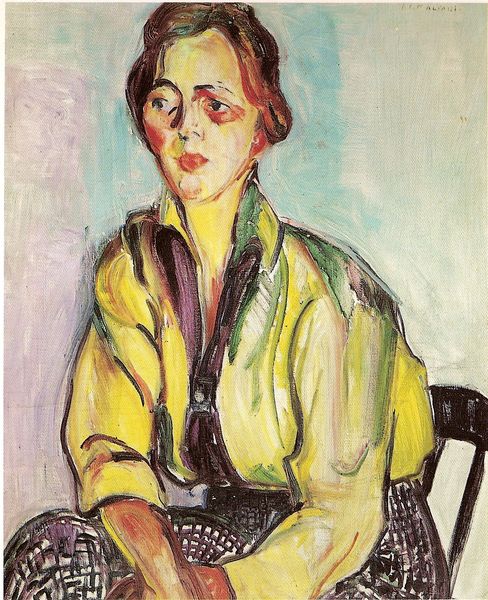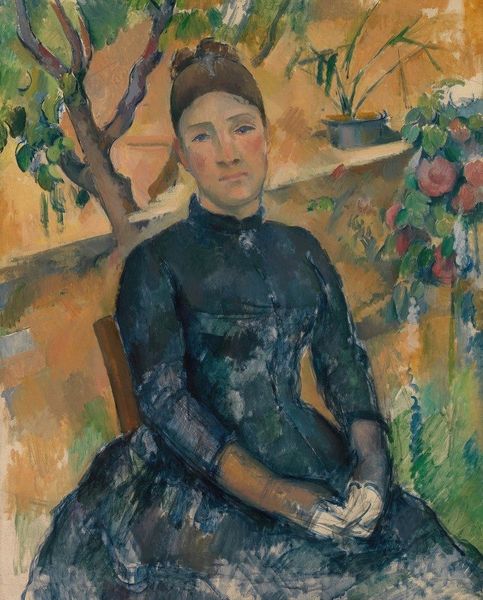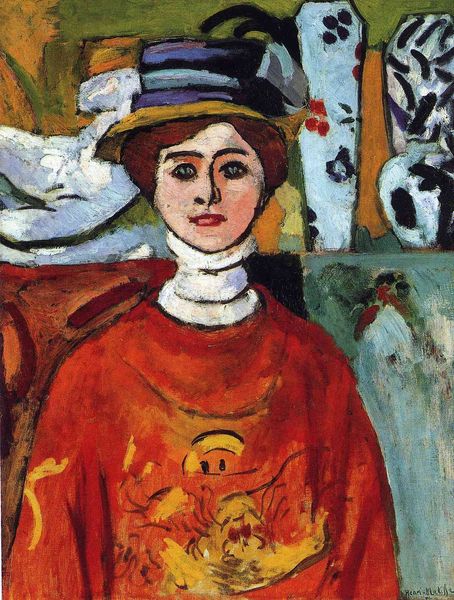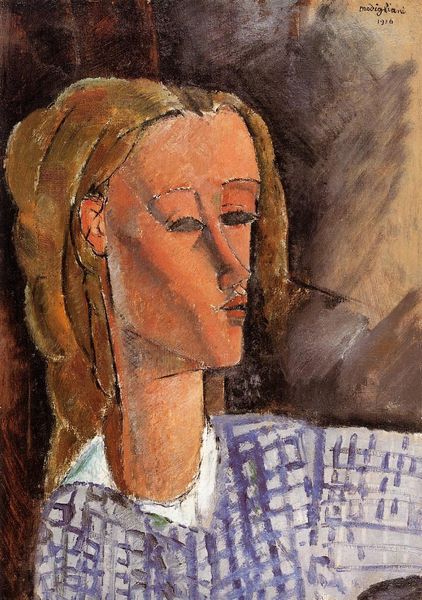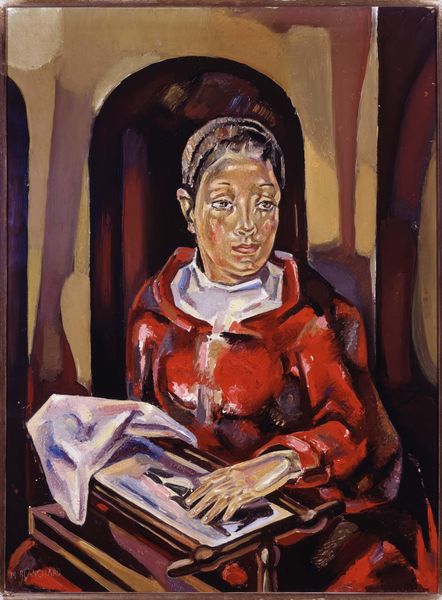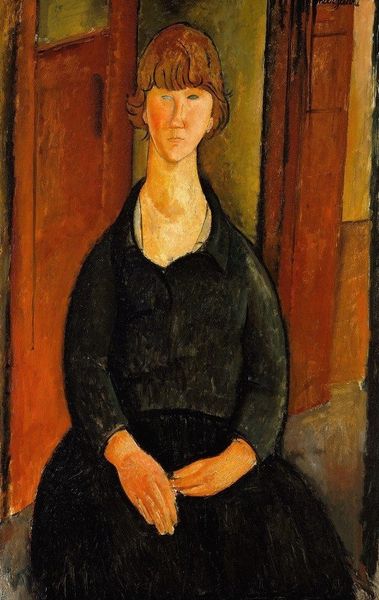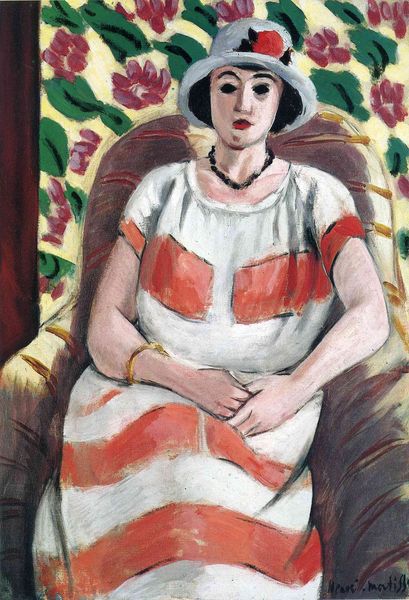
painting, oil-paint, impasto
#
portrait
#
self-portrait
#
painting
#
oil-paint
#
oil painting
#
impasto
#
post-impressionism
#
portrait art
Copyright: Public domain
Editor: So, here we have Paul Cézanne's "Madame Cézanne in a Yellow Chair" from around 1890, an oil painting that presents his wife Hortense Fiquet. It feels…reserved, almost stoic. The colors are quite muted overall. What strikes you most about this portrait? Curator: It’s more than just a reserved portrait; it’s a study in the constraints placed upon women within marriage and society during that era. Look at the way she's positioned, almost rigidly, in the chair. Consider the societal expectations placed upon women to be demure, domestic, and supportive of their husbands' careers. Does her posture or expression reflect a quiet resistance or perhaps a sense of being confined? Editor: I see what you mean. Her hands clasped tightly together almost suggests anxiety or discomfort, like she's guarding herself in some way. Do you think the yellow chair holds some significance? Curator: Absolutely. The vibrant yellow chair creates a striking contrast with her somber clothing and the overall muted palette. In the late 19th century, yellow was often associated with ideas of modernity but also deviance. Think about it. Could this splash of color be a subtle suggestion of Hortense’s individuality struggling against the confines of her role? What does it tell us that the brightest thing in the painting is where she is…confined? Editor: That’s fascinating. I never considered the color choice as a commentary on her restricted role. It really adds a whole new layer of interpretation. Curator: Exactly. And think about the lack of overt affection in most portraits of wives from this era by their artist husbands. It’s worth examining these domestic scenes through the lens of feminist theory, asking ourselves whose narrative is truly being represented. Editor: This has really opened my eyes to looking at portraits like this critically. Thank you! Curator: My pleasure. Art should be more than just passively viewed. It should spark critical conversations about our history and present.
Comments
No comments
Be the first to comment and join the conversation on the ultimate creative platform.
